Technology has become the modern day version of the ’57 Chevy – at least that is what I keep telling my wife. People are crawling out of the woodwork as self proclaimed technologist – It’s been a long road of abuse to nerdom and I think that far to many people are catching an episode of StarTek 2.0 on G4TV (BTW – if you have not seen StarTrek Cribs on YouTube you have to check it out) and laying stake to the techie guru throne. As I articulated this week to a colleague the road to nerdom is paved with 8th grade wedgies and significant weight loss in the 9th and 10th grade. But that got me thinking, was the cream puff ’57 Chevy the real winner in late 50s or was it the brush painted sleeper that disillusioned the crowd – that’s what the 9th and 10th grade nerds have become, that brush painted nova that cleaned the clock of cherry street rod. The key to the kingdom is learning how to stay true to your inner geek while polishing the external geek. This is one of the first weeks that I have not traveled in the past two months so I have been spending some time knocking some projects off the list, one of those project is a Virtual Appliance – While building the appliance – I do my best work between 8 PM and 3PM a true nerd quality, I realized that I really am a nerd. The proof is in the pictures so lets get started:
Pictures of the Mindstorm robot that guards the door to my home office:








As if it is not enough that I still play with Legos – BTW these are not normal legos the big box in the middle is an onboard computer – of course I have to spend countless hours writing perl and java code to make my robot do cool stuff like follow my dog around the house – My daughter thinks it is the funniest thing. If you think legos are for kids google “lego mindstorm rcx” or check out this site http://graphics.stanford.edu/~kekoa/rcx/.
Next I found some pictures that I sent to colleagues when my daughter was born – she is 6 days old in these pictures.





It’s never to early to start educating 🙂
Lastly I have amassed a ridiculous amount of compute power in my house. I think the total number of systems stands at approx 15 not including a few laptops – 1 quad proc and 3 dual proc systems. Virtual machines in the 20+ realm with most major open systems Operating Systems up and running from Windows XP, 2K, 2K3, Linux (Debian and RedHat based distros – my favorites are Ubuntu on the desktop and CentOS on the server), FreeBSD, HP-UX, Solaris and others.
I have to keep the window open in my office in the winter to keep the temperature regulated and in the summer I have a portable air conditioner that runs 24×7. You can see the AC unit in the third picture just to the left of the window – 10K BTU unit does a nice job, this year I put a drain line through the floor and into the basement sink so I do not have to empty the water every day, that was a real pain.
Lots of other equipment including RAID arrays, a Cisco IOS switch, FC Switches, a SCSI bus analyzer, and a SCSI-to-FC bridge to name a few.
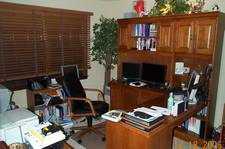
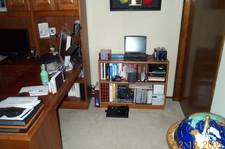
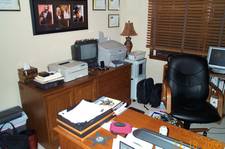
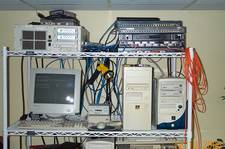
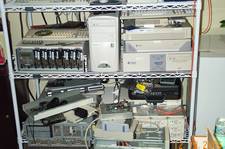
It’s tough work staying atop the nerd mountain but it sure is fun, and it keeps the house warm in the winter. I also like having enough compute power to do almost anything I need to at home – It’s a huge advantage when you can work a week straight without sleep or a shower 🙂





















 a commercial antenna, the thing is sick and if you never want to loose your signal I highly recommend it :). There are two important components, the antenna (in this case an omni-directional) and the amplifier.
a commercial antenna, the thing is sick and if you never want to loose your signal I highly recommend it :). There are two important components, the antenna (in this case an omni-directional) and the amplifier.



